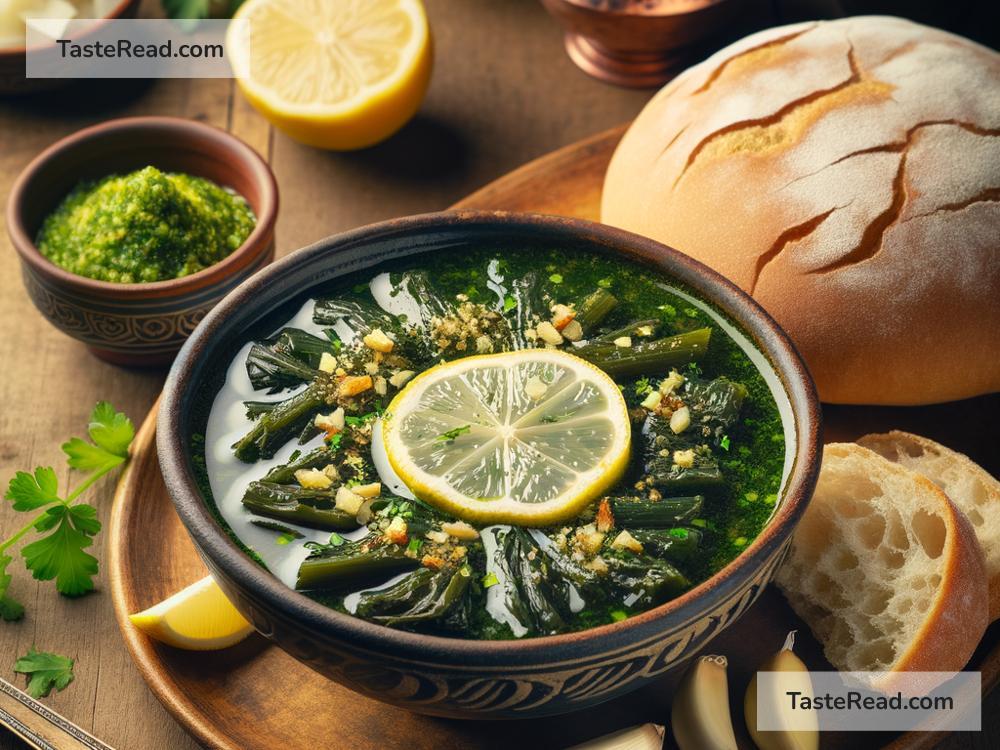Title: A Simple Guide to the Story Behind the Egyptian Molokhia Soup
If you’ve ever dipped your spoon into a bowl of Molokhia soup, you’ve not only tasted a delightful dish but also delved into a rich piece of Egyptian history. This thick, green soup is much more than a culinary delight; it’s a story from ancient times, passed down through generations. Today, let’s embark on a simple journey to explore the story behind the Egyptian Molokhia soup.
What is Molokhia?
First off, Molokhia is both the name of the soup and the leafy green vegetable used to make it. The plant from which these leaves are harvested is known scientifically as Corchorus olitorius, often called Jew’s mallow in English. These leaves are incredibly nutritious, packed with vitamins, minerals, and antioxidants.
The soup, known for its distinctively slimy texture similar to okra or aloe vera, is a staple in Egyptian cuisine. But it’s not just confined to Egypt; variations of Molokhia are found across the Middle East and parts of Africa. However, the Egyptian recipe, often featuring rabbit, chicken, or seafood, is among the most renowned.
The Historical Roots of Molokhia
The story of Molokhia takes us back thousands of years. It’s believed that the dish dates back to the time of the Pharaohs, making it one of the oldest known meals still prepared today. There are records suggesting that Molokhia leaves were cultivated and consumed in Ancient Egypt, prized for their health benefits and possibly enjoyed by the pharaohs themselves.
The name “Molokhia” is derived from a word that means “royal”, which is fitting considering its storied past. Legends even suggest that the soup was banned for commoners at certain points in history, reserved solely for the Pharaonic royalty and the nobility.
The Cultural Significance of Molokhia
Molokhia is more than a dish; it is a cultural fixture in Egyptian society, representing hospitality, family, and tradition. Preparing and serving Molokhia is often a communal activity that brings families and friends together. It is a sign of affection and respect to serve Molokhia to your guests in Egypt.
Moreover, Molokhia transcends the everyday diet, featuring prominently in celebrations and festive occasions. Be it weddings, religious feasts, or family reunions, Molokhia often takes the center stage, prepared with great care and shared with joy.
How Is Molokhia Prepared?
The preparation of Molokhia might vary slightly from one home to another, but the essence of the dish remains the same. The Molokhia leaves are finely chopped or ground into a consistent texture before being cooked in a rich broth. The type of broth can differ—chicken, beef, fish, or even rabbit, depending on the region and family tradition. Aromatic garlic and coriander are sautéed and added to the broth, infusing it with those unmistakable flavors.
Molokhia is typically served over rice or with a side of bread, and a squeeze of lemon juice is often added before serving to cut through the richness and bring a refreshing zest to the dish.
The Global Journey of Molokhia
While deeply rooted in Egypt, Molokhia has traveled far and wide, finding a place in kitchens around the world. Immigrants and adventurous chefs have introduced Molokhia to diverse palates, often adapting the recipe to suit local tastes and available ingredients.
This global journey of Molokhia is a testament to the dish’s universal appeal. Whether you’re enjoying Molokhia in a cozy Egyptian home, a bustling Middle Eastern restaurant, or trying a fusion version in a far-off land, you’re experiencing a piece of culinary history that has transcended borders and ages.
Conclusion
Molokhia soup is much more than a tasty and nutritious meal; it’s a bridge to Egypt’s ancient past, a centerpiece of its cultural identity, and a shared experience that connects people. Whether you’ve had the pleasure of trying it or are yet to discover its unique flavor, the story behind Molokhia is a fascinating tale of tradition, history, and the enduring power of food to bring us together.
So the next time you sit down to enjoy a bowl of Molokhia soup, remember, you’re not just eating a meal; you’re partaking in a legacy that has nourished generations. And who knows, maybe it’ll inspire you to create your traditions, crafting stories that your descendants will tell around their tables in the years to come.


